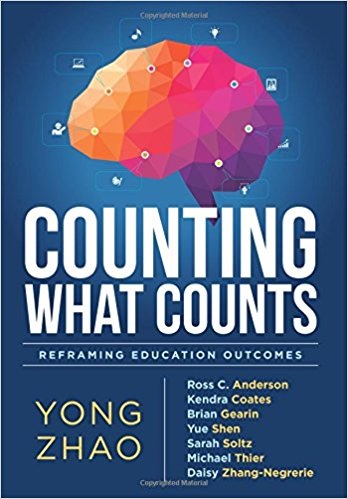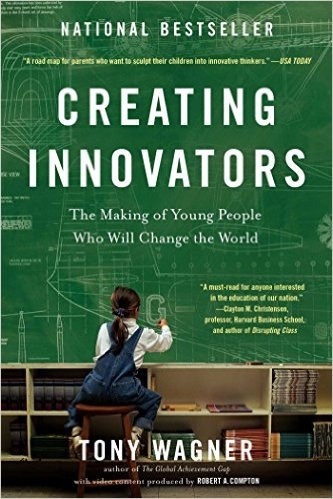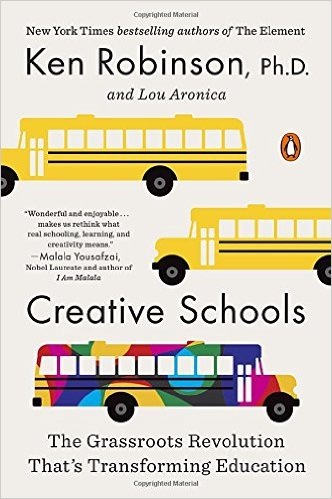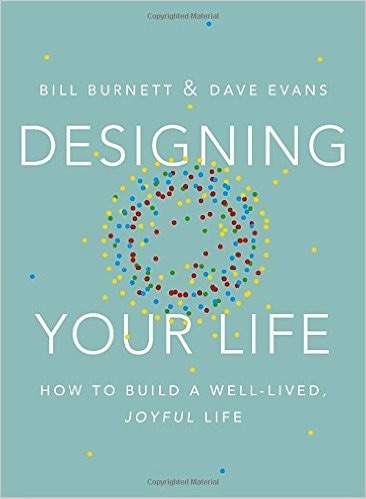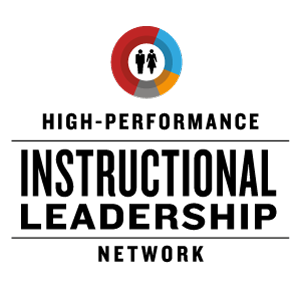Archive for the ‘Book Summaries’ Category
Tuesday, December 19th, 2017
Counting What Counts: Reframing Education Outcomes by Yong Zhao and friends takes on the current system with its focus on standardized tests and their sole focus on cognitive skills. Chapters are devoted to defining a variety of non-cognitive skills that are connected with success in life and the current status of how to assess them. They make a case for a new paradigm that would move the system towards more personalized learning and assessment with more focus on non-cognitive skills. Be sure to add this fine book to your professional development library.
Introduction – The Danger of Misguiding Outcomes: Lessons From Easter Island – Yong Zhao
- Yong uses the story of how the natives of Easter Island overexploited the resources in a race to build ever bigger statues. He compares this to the current race to produce students with excellent tests scores. Here he makes the case that the obsession with test scores has and will continue to damage our education ecosystem. It has resulted in cheating, teaching to the test, focusing on students on the pass/fail border, and limiting the focus on subjects not tested. We are destroying teacher autonomy as we ignore real challenges like poverty, unsafe neighborhoods, and unequal access.
- We are striving to produce a homogeneous population rather than supporting diverse talents. Routine knowledge and skills are stressed and they can easily be outsourced or automated. There are many negative side effects that are not considered unlike drug companies that must evaluate and publish side effects of their products. Creativity and non-cognitive skills are ignored. Students good at taking tests might not be good at anything else.
1. Numbers Can Lie: The Meaning and Limitations of Test Scores – Yong Zhao
- Humans are too complex to be reduced to a single number, and such numbers should not be used to make life-changing decisions. Research indicates that IQ tests have limited predictive power. Personality variables like high and stable self-esteem appear to be decisive for life success. SAT and ACT tests are much less predictive of college success than a student’s high school GPA. After many years, the Common Core Standards don’t appear to make students college ready, while motivation, time management skills, and awareness of postsecondary norms and culture do.
- A look at international tests shows that U.S. students have been bad at test taking for a long time. Such scores would suggest that by now the U.S. would be an economic backwater, but the facts suggest otherwise. It’s possible that countries that obsess about tests more than we do have discouraged the cultivation of creative and entrepreneurial spirits.
Posted in Book Summaries, Education Books, Leadership Books | Comments Off on Counting What Counts: Reframing Education Outcomes by Yong Zhao & Friends
Monday, May 24th, 2010
Here is a review of an Edited book by Goldhaber and Hannaway that looks at a wide variety of human resource issues in education. Everyone who does any teacher hiring, evaluation, or staff development should have this book. It is also essential for policy makers. The bottom line is that we have an outmoded system and that we won’t know what works unless we try the type of alternatives discussed here.
Click here to see my review of this book.
Tags: Education Reform, Human Capital Systems, Urban Institute Press
Posted in Book Summaries, Education Books | Comments Off on Creating A New Teacher Profession – edited by Goldhaber & Hannaway
Monday, December 5th, 2016
Creating Innovators: The Making of Young People Who Will Change the World by Tony Wagner (© 2012, Scribner: New York, NY) explores what parents, teachers, and employers must do to develop the capacities of young people to become innovators. Tony profiles innovators to identify patterns in their childhood that made them what they are. He shows how to apply his findings to education and tells parents how to compensate for poor schools. Keys include collaboration, interdisciplinary problem-solving, and intrinsic motivation. Sixty original videos are included that you can access via a smartphone. Go to Creating Innovators for a trailer.
A Primer on Innovation
- Innovation is about the process by which new things take place. It involves using novel and creative ways to create value via new products, services, business models, or processes. It involves valuable original ideas or insights that you somehow implement. It’s creative problem solving applied to the real world. Incremental innovation significantly improves products, processes, or services. Disruptive innovations create a new or fundamentally different product or service that disrupts markets and displaces dominant technologies.
- Innovations can be technical like Apple’s iPod, iPhone, and iPad. They can also be social like the nonviolent strategies of Gandhi and M. L. King.
Skills of Innovators/Nature of Creativity
- Tony offers the following as the main skills needed: 1) critical thinking and problem solving 2) collaboration across networks and leading by influence 3) agility and adaptability 4) initiative and entrepreneurship 5) accessing and analyzing information 6) effective oral and written communication 7) curiosity and imagination. It is also necessary to imagine the world from multiple perspectives, see all aspects of a problem, be optimistic, experiment to explore problems with a bias towards action, work with others as the day of the lone genius seems to be over. For places like Google and Apple, intellectual curiosity is more important than smarts. They also want people who will take control of a situation rather than waiting to be lead.
What Is Needed
- Creativity is a habit and like any habit, it can be either encouraged or discouraged. Teachers that value the right answer more than provocative questions tend to drum the curiosity out of students early on. Creativity can be encouraged or discouraged.
- Tony cites work of Teresa Amibile’s who says that creativity or innovation has three components. They are expertise, creative thinking skills, and motivation. She believes that motivation is the most important and that intrinsic motivation has more impact than extrinsic motivation. Tony adds that childhood play should lead to adolescent passion and adult purpose. They are the three interrelated elements of intrinsic motivation. He notes that a disproportionate number of innovative people attended Montessori schools where play is an important part of the curriculum.
What Is Needed
- Knowing how to find those things you are interested in and that motivate you is way more important than specific things you study. This implies that you should put a buffet of opportunities in front of children and let them engage in unstructured play. If a child finds an interest, it should be encouraged.
- Tony tells of a course at Stanford where students work in teams to solve open-ended problems. Most high school and college courses that feature individual competition, specific content, and extrinsic incentives like grades and GPA. What is needed are courses that feature teamwork, multidisciplinary approaches, and the intrinsic incentives of exploration, empowerment, and play.
Tags: Creating Innovators, Innovation, Tony Wagner
Posted in Book Summaries, Business Books, Education Books, Leadership Books | Comments Off on Creating Innovators: The Making of Young People Who Will Change the World – by Tony Wagner
Wednesday, June 3rd, 2015
Creative Schools: The Grassroots Revolution That’s Transforming Education by Sir Ken Robinson and Lou Aronica ©2015 offers advice for educators and policy makers that can bring rigorous, personalized, and engaged education to everyone. As a leading voice in education, it’s vital that anyone interested hear what Sir Ken has to say. If you haven’t seen his number one TED Talk check that out too. Click at the bottom on any page to purchase this necessary book.
Sir Ken Robinson, PhD and Lou Aronica
- Sir Ken is an English author, speaker, and international advisor on education in the arts to governments, non-profits, education, and arts bodies. He was Director of The Arts in Schools Project (1985–89), Professor of Arts Education at the University of Warwick (1989–2001), and was knighted in 2003 for services to education. He is the author of The Element, Finding Your Element, and Out of Ours Minds. His 2006 TED Talk How Schools Kill Creativity is the most watched in history with over 33 million views. Originally from a working-class Liverpool family, Robinson now lives in Los Angeles with his wife Marie-Therese and children James and Kate.
- Lou Aronica is the author of three novels and the coauthor of several works of nonfiction, including the national best sellers The Culture Code, The Element, and Finding Your Element.
Introduction: One Minute to Midnight
- The current reforms are being driven by political and commercial interests that misunderstand how real people learn, and how great schools work. As a result they are damaging the prospects of countless young people. The standards culture is harming students. In response, Sir Ken continues to push for a more balanced, individualized, and creative approach to education. Instead, schools take children with voracious appetites for learning and see to it that their appetites are dulled as they go through school. Current efforts focused on raising standards through competition and accountability do not work, and compound the problems they claim to solve. If you design a system based on standardization and conformity, you suppress individuality, imagination, and creativity. Schools that were designed to produce factory workers resemble factories with their assembly line approach. Current reforms stick with this approach only to be less in tune with the circumstances of the 21st century. Sir Ken thinks that schools need to be transformed not reformed, and that we know how to do it even though we aren’t.
Posted in Book Summaries, Education Books, Leadership Books | Comments Off on Creative Schools: The Grassroots Revolution That’s Transforming Education by Sir Ken Robinson and Lou Aronica
Monday, August 22nd, 2022
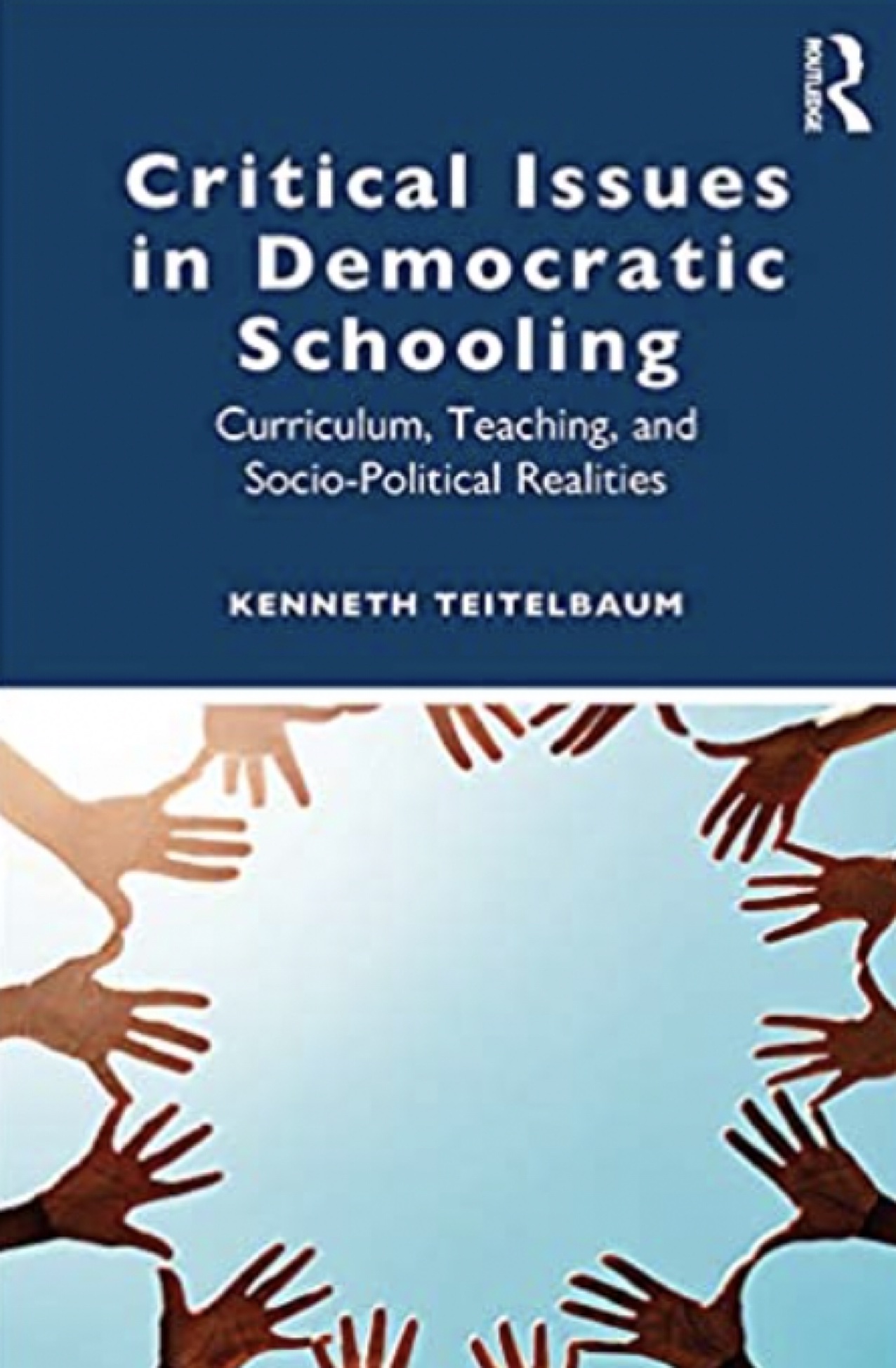
Critical Issues in Democratic Schooling: Curriculum, Teaching, and Socio-Political Realities by Kenneth Teitelbaum is an ideal textbook for undergraduate and graduate teacher education programs. Each chapter can easily form the basis for whole class and small group engaging conversations on topics that prospective teachers need to confront. It’s also a great book that will allow practicing teachers and administrators to question their practices. If you are looking for a book to give all of the teachers in your building for professional development, look no farther.
Part I: Teaching and Teacher Education
1. Teaching Has Its Own Rewards
- Teaching is a profession for those who want to create and inspire, for those who love learning, for those who care about our future, and for those who like to watch young people develop. Students don’t reveal what they are thinking or learning. The most important learning is difficult to capture and may not be known until much later. Likewise, the rewards of teaching are also difficult to measure. (Doug: Like Ken, positive feedback from former students and parents always makes my day.)
2. Despite What Some Think, Teaching Isn’t Easy
- This thinking emanates from the fact that mostly women taught in the last 150 years. A child’s education begins at home so all parents are essentially teachers. Stresses faced in the home and elsewhere outside of school impact behavior in school add difficulties when it comes to dealing with emotional issues and evolving subject matter. The questions of who selects the content and what content to select are also central. Decisions regarding how to deliver content seem endless as are the roles that teachers are expected to play. Time may be the biggest constraint. Teachers, therefore, need proper support and compensation.
3. Reasons to be a Teacher
- It certainly is not the money. Ken’s research and my own show that teacher salaries have not kept up with inflation since I started in 1970. There has also been some erosion in benefits and loss of autonomy due to test-driven expectations and their repercussions. Many teachers work well beyond the 40-hour work week and most will tell you that students have become more unruly over the years. This may have caused fewer people to prepare for a career in teaching, but the current shortage should make jobs easier to find.
- Ken finds seven reasons that still draw people to the profession. 1) Independence and Collaboration: To some extent, teachers are free to decide how they will present the desired content. They should also be able to work with other teachers, although the time available to do so depends on leadership. 2) Lifelong Learning: If teachers seek excellence, they are always thinking about how to improve. As lifelong learners, they will enjoy learning and improving daily. 3) Creative Imagination: Taking reasonable creative risks will make teaching more fun for all. This will help you avoid getting stuck in a rut but consider discussing such risks with your supervisor. 4) Forever Young: Lighting fires in young people is exhilarating and revitalizing. It keeps you stay hip and young at heart. 5) A Noble Profession: In spite of the fact that the media often bashes schools, teaching is widely considered a noble profession by the public. 6) Helping to Create a Better World: Teaching is a profession of hope, and even though you won’t know exactly how you made the world better, you will believe that you did. 7) Student Growth: We all have stories about teachers who made a difference in our lives. You may not see incremental growth daily, but it’s there.
4. “Work With What You’ve Got”
- If you see oppression or injustice in any form be sure to speak up. If you see that school practices or policies at any level are ineffective say so. You may not have all the autonomy you want, but work with what you have. You have to believe that schools can change over time for the better. You may have to make some small compromises, but they are probably worth it.
5. Lessons from Alternative (Progressive) Schooling
- These schools are mostly private so the students are more likely to have more means and skills than typical public school students. Ken has worked in, visited, and read about such schools. In essence, the students are much more in control of what they study, the teacher talks less, and usually intervenes when students need help with skills necessary to pursue their chosen learning. Students are essentially self-directed learners, which requires skills that poor students may not have.
- While such schools are not noted for the longitudinal follow-up that can determine how their students did, the data available suggests that the students do fine and tend to be happier and more self-confident. The atmosphere of trust found at these schools could account for that. Creativity, problem-solving, and project-based learning are seen throughout the day. Ken hopes to see more of this in public schools in spite of the roadblocks created by standardized curriculum and testing.
Posted in Book Summaries, Education Books, Leadership Books | Comments Off on Critical Issues in Democratic Schooling: Curriculum, Teaching, and Socio-Political Realities by Kenneth Teitelbaum
Sunday, November 3rd, 2013
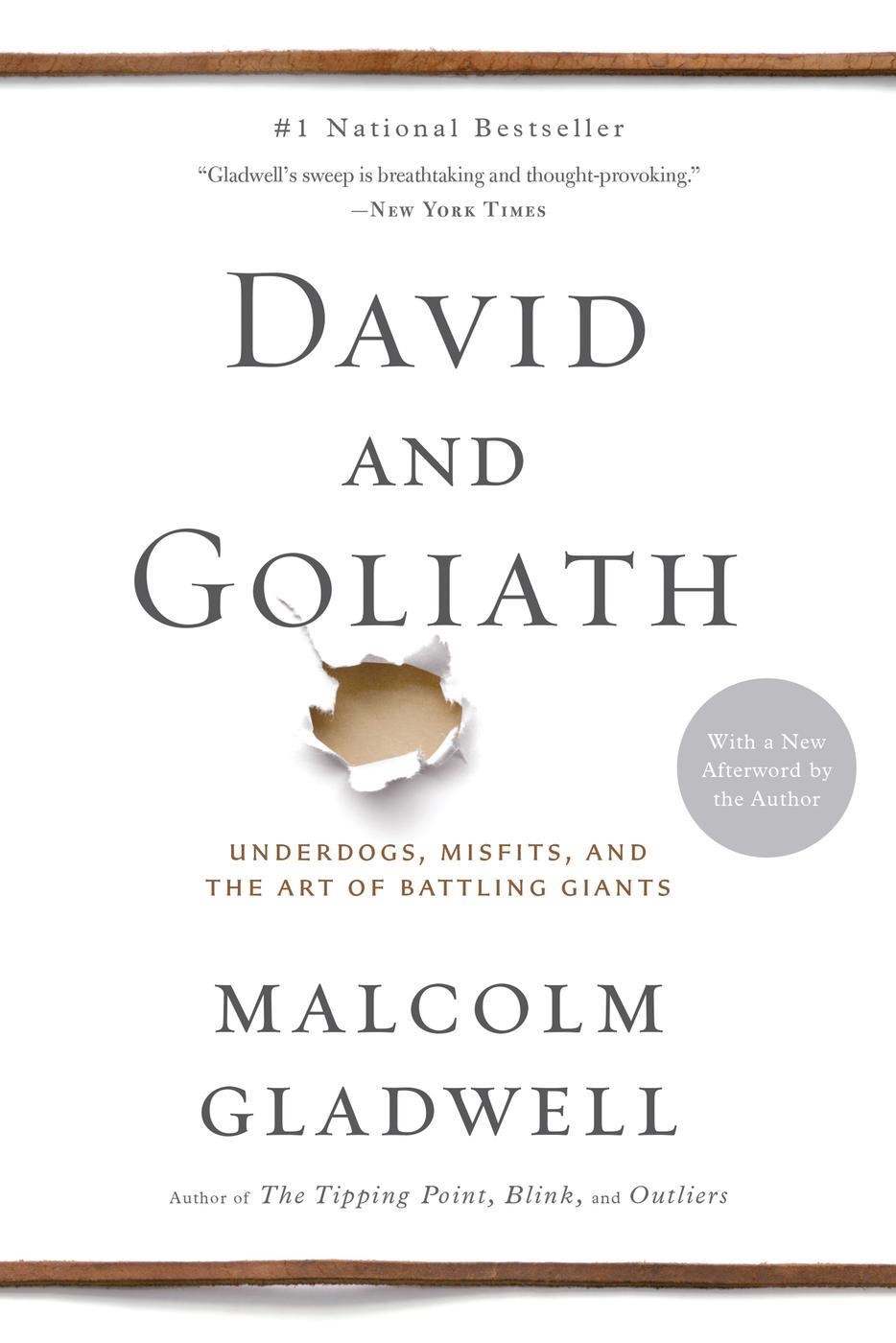
David and Goliath: Underdogs, Misfits, and the Art of Battling Giants is Malcolm Gladwell’s fourth best-selling book to be summarized here. I’ve been a big fan ever since I summarized The Tipping Point. If you like to give books as gifts, please click below and get copies for yourself and your favorite bookworms.
Why Goliath was the Underdog
- In the story of David and Goliath, it turned out that it was Goliath’s size that made him a better target for David’s sling. Warfare of the time featured cavalry, infantry, and a third group that fired projectiles like arrows and rocks. The infantry represented sitting ducks as they were relatively stationary compared to the cavalry. The humble infantryman, however, had better odds taking on a charging horse with a spear to the belly. Calvary could take on the projectile boys as they were moving targets that were much harder to hit. This is like a game of rock, paper, scissors were the odds depend on the matchup. For Goliath, facing a slinger like David was like facing a modern rival with a handgun.
Use Your Assets, Hide Your Weaknesses
- Gladwell uses the David and Goliath story as a metaphor for how we should not always assume that the people who seem to have the upper hand really do. He tells a number of stories of how people who didn’t seem to have a chance won the day. One features a man from India who decided to coach his daughter’s basketball team. His girls were not especially tall or skilled, but he changed the odds by changing how the game was played. He realized that the other teams didn’t defend over half the court. When he put in a full-court press that lasted the entire game, he found that there were enough turnovers which lead to easy baskets to allow his team to triumph over superior talent.
- There is also the story of Lawrence of Arabia whose troops were successful because they took advantage of their main asset, which was speed. This showed that material resources are not always an advantage. Rather than trying to improve on your weaknesses, sometimes it is better just to hide them.
- Even wealth can be a disadvantage when it comes to raising kids. Malcolm tells the story of a successful businessman who worked in his father’s scrap metal yard. It was hard, dirty work and it made him realize that he needed to work hard to make sure he would enjoy a better future. It was his family’s very lack of wealth that gave him the qualities that allowed him to be wealthy today. Ironically, he now has a problem as his kids want for nothing. He fears they won’t develop the qualities that made him successful. While poverty can be stressful and debilitating, it seems that just enough wealth can make you relatively happy while still letting you develop desirable qualities. The same also seems to work for class size as classes that are too big or too small have their own downsides.
Posted in Book Summaries, Business Books, Education Books, Leadership Books | Comments Off on David and Goliath: Underdogs, Misfits, and the Art of Battling Giants by Malcolm Gladwell
Wednesday, December 14th, 2022
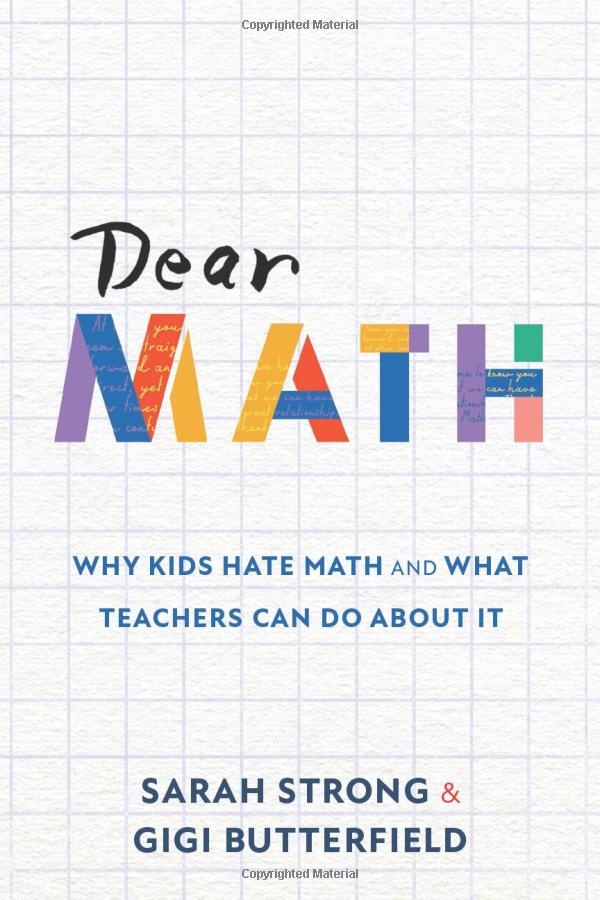
Dear Math: Why Kids Hate Math and What Teachers Can Do About It by Sarah Strong & Gigi Butterfield shows how teachers can use students’ “Dear Math” letters to get to know their students better and draw them into learning. There is an emphasis on creating a community of mathematicians in a project-based environment. Be sure to get a copy for any math teacher you know. Thanks, Sarah and Gigi.
1. Dear Math, You Are Dreadful
- Start by telling students that you need to get to know them as mathematicians so you can design and facilitate their math lessons. They will all write “Dear Math Letters” for you to read. To help them get started, give them one of the ten prompts listed on pages 25 and 26. For example, what is one way that math has helped you grow? As you read the letters, be prepared for a large dose of negativity, as math is not the favorite subject of most students.
- As you read the letters, give feedback and look for connections and commonalities. As you teach, mention things from letters anonymously. Consider having students read each other’s letters. This will help develop empathy between students. Weekly letters should help you determine what was valuable and what wasn’t.
2. Dear Math, You Are Hierarchical
- The hierarchy here comes from the natural sorting of ability from high to low that happens in classes generally and perhaps more often in math classes. The goal, then, is to disrupt any existing hierarchy or prevent it from happening. Disruption of this metaphor begins with forming close relationships with others. People with close relationships are not likely to compare themselves to each other. Being better connected also improves the quality of group work.
- Sara’s main tool is what she calls “Belongigness Buddies,” although you can call it something else. Buddies check in on each other daily in person and using social media tools. While the check-ins largely involve content, students are encouraged to include feelings. The teacher also buddies with students who have attendance issues. Absent students can use FaceTime or Zoom to attend class virtually.
3. Dear Math, You Are Unnecessary
- Teachers, in general, need to be prepared for the “why do we have to know this?” question. Use Internet search if you need to, and it’s ok to say, “I don’t know, but think of this concept as a puzzle that will be good for your ability to solve real problems.” Knowing why they need to learn something adds to a greater sense of agency, the ability to construct new knowledge, and the ability to look critically at new information.
- Math isn’t pointless and shouldn’t feel that way. Sarah likes to start classes with an image of some sort. She also makes use of story problems, also known as word problems but with more captivating stories. After they read the story, she asks, what is this story about? What are we trying to solve for? What might a potential answer look like? (estimation)
4. Dear Math, You Are Intimidating
- The three sources of intimidation or anxiety are home, society, and classrooms. Often times a parent’s doubt about their own math skills can contribute to a student’s feelings. Similar messages are also found in our media. Teachers and faster learners are also a source and these are feelings that lead to lower performance.
- The goal is to design class activities to disrupt intimidation. Sarah describes a “Daily Discourse” activity designed to do this. It’s a ten to fifteen-minute activity led by students, with all students taking turns leading the discourse and taking notes. Gigi reminds us that the opposite of intimidation is encouragement.
Posted in Book Summaries, Education Books, Leadership Books | Comments Off on Dear Math: Why Kids Hate Math and What Teachers Can Do About It by Sarah Strong & Gigi Butterfield
Thursday, March 28th, 2013
Decisive: How to Make Better Choices in Life and Work by Chip & Dan Heath shares research and cool stories that show how our decisions are disrupted by an array of biases and irrationalities. They go on to introduce a four-step process designed to counteract these problems. Their fresh strategies and practical tools will enable you to make better choices at work and beyond. If you want to increase your chances of making the right decision at the right moment, this book is for you. Click the icon at the bottom of any page to buy this important book for yourself and your key colleagues.
The Heath Brothers
- Chip Heath is a professor at the Graduate School of Business at Stanford University. Dan Heath is a senior fellow at Duke University’s Center for the Advancement of Social Entrepreneurship (CASE). They are the authors of the bestsellers Switch and Made to Stick.
- While working on this book, the authors asked that I forego my usually summary approach and do a more traditional book review highlighting a few useful concepts and to use my educational expertise to show readers how to apply them to their life. I have tried to honor this request and thank them for their input.
Introduction
- Chip and Dan start with the key core difficulties that negatively impact our decision making. We think we know everything there is to know prior to making a decision. We also tend to be overconfident in our knowledge of the future and seek only data that confirms what we believe. We let our emotions get in the way, and often present choices in either/or terms.
- Doug: In education, I’ve seen each of these whenever decisions were made whether by myself as principal or by a collaborative process. It is important to challenge your own thinking and say things like “you may have a point” when a colleague disagrees. Everyone knows that they aren’t always right, but it’s hard for many people to investigate the possibility that they are wrong prior to committing to a decision. They are more likely to dig in and defend their position.
Ask: What Else We Could Do/Buy?
- When dealing with budget issues, you should always ask “what else could we buy” if we didn’t buy the item(s) we are considering? A good example today is what could we buy with all the money we are spending on textbooks and standardized testing?
- The vanishing options test would also allow you to consider what to do with an administrative position when someone leaves. Always ask “how else you could accomplish the person’s function, and is there some part of what they are doing that doesn’t need to be done.” I have found that for administrators, the job will expand to fill the day with tasks that aren’t mission critical.
Posted in Book Summaries, Business Books, Education Books, Leadership Books | Comments Off on Decisive: How to Make Better Choices in Life and Work, Heath Bros.
Monday, January 25th, 2010
Denialism: How Irrational Thinking Hinders Scientific Progress, Harms the Planet, and Threatens Our Lives by Michael Specter deals with how large sections of our society are in denial about things that science supports. Included are topics like child immunizations, genetic engineering of our food supply, alternative medicine, and race-based medication. The following quote should give you some idea of what to expect:
“Denialism is not green or religious or anti-intellectual, nor is it confined to utopian dreamers, agrarians, or hippies. It is not right- or left-wing; it is a fear expressed as frequently and with as much fervor by Oxford dons as by bus drivers.”
Although the book is science centered, you don’t have to be a scientist to follow it.
Click here to see the excerpted summary of this book.
Posted in Book Summaries, Education Books | Comments Off on Denialism – Irrational Thinking is Common – Michael Specter
Tuesday, January 17th, 2017
Designing Your Life: How to Build a Well-Lived Life by Bill Burnett & Dave Evans offers time-tested advice for becoming the best version of yourself possible. The advice here can help even if you are already fairly happy with your life. Their website also contains useful resources and supplements to the book.
Bill Burnett & Dave Evans
- Bill is the executive director of the Stanford Design Program and co-founder of the Life Design Lab. He is also a former leader of Apple’s PowerBook product line and CEO of a design consultancy. Dave is co-founder of the Life Design Lab, a lecturer in the Stanford Design Program, a management consultant, and formerly a co-founder of Electronic Arts.
Introduction
- Since only 27% of college grads end up in a career related to their jobs, it’s clear that most end up designing their careers and all need to design their non-career life. While this book is for all of us, it’s the two-thirds of workers unhappy with their jobs and the 15% who hate their work that need it the most. Life is full of problems, and solving them is what design is all about. A well-designed life is constantly creative, productive, changing, evolving, and there is always the possibility of surprise. Life then is about designing something that has never existed before. Keep in mind that passion is something you develop after you try something and get good at it. A key point is to never measure yourself against anyone. The five necessary mindsets covered are 1. Be Curious 2. Try Stuff 3. Reframe Problems 4. Know it’s a process and 5. Ask for help.
1. Start Where You Are
- You need to know where you are and what design problems you are trying to solve. In design thinking, the authors put as much emphasis on problem finding as problem solving. Deciding which problems to work on may be the most important decisions you make. The authors define a class of problems known as gravity problems. These are problems like trying to overcome gravity in that they are not actionable and therefore can’t be solved. The key is to not get stuck on something you have no chance of succeeding at.
- At the heart of this chapter is an activity that lets you take stock of your current status. You are asked to rate from 0 to 100 how you feel about the criteria of 1) Your Health, 2) Your Work, 3) Your Play, and 4) Your Love. As far as love is concerned you should consider all the different types of love you experience, not just love from a spouse or significant other. When you complete this task you will have a framework and some data about yourself. Nex,t you are asked to answer these questions. 1) Write a few sentences about how it’s going in each area. 2) Ask yourself if there’s a design problem you’d like to tackle in any area. 3) Ask if your problem(s) is a gravity problem.
Posted in Book Summaries, Business Books, Leadership Books | Comments Off on Designing Your Life: How to Build a Well-Lived Life by Bill Burnett & Dave Evans
